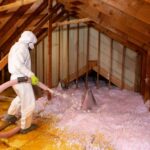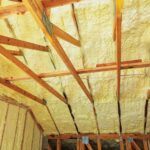As a homeowner, recognizing the signs of water damage on your ceiling is crucial in maintaining the integrity of your home. Learning how to spot signs of water damage on ceiling early can save you from costly repairs and potential hazards. In this guide, we will explore the various indicators of water damage, discuss their causes, and provide insights on how to address them effectively.

Why Water Damage Happens
Water damage can occur due to several reasons, such as roof leaks, plumbing issues, or natural disasters. Understanding these causes can help you prevent future damage and maintain a safe home environment. Often, issues like poor roof maintenance or clogged gutters can lead to water seeping into your home, affecting your ceiling.
Early Signs of Water Damage
Discoloration and Stains
One of the first signs of water damage is discoloration or stains on the ceiling. These stains are usually yellow or brown and can spread over time if not addressed. They indicate that water is pooling somewhere above the ceiling, possibly from a leak.
Peeling or Bubbling Paint
When paint starts to peel or bubble, it is often a sign that moisture is trapped beneath the surface. This can be particularly noticeable if the paint is relatively new or if the ceiling has recently been painted.
Warped Ceiling
A warped ceiling is a serious sign of water damage. It indicates that the structure of the ceiling is compromised, often due to prolonged exposure to moisture. This can lead to structural damage if not repaired promptly.
Advanced Signs of Water Damage
Mold and Mildew
The presence of mold or mildew on your ceiling is a clear indicator of water damage. Mold thrives in moist environments, and its presence can pose health risks for you and your family. It’s essential to address mold issues quickly to prevent them from spreading.
Dripping Water
Dripping water from your ceiling is a sign of severe water damage. This indicates that water is accumulating significantly, and immediate action is required to identify and fix the source of the leak.
Causes of Ceiling Water Damage
Roof Leaks
One of the most common causes of water damage is a leaky roof. Whether due to missing shingles, damaged flashing, or poor installation, roof leaks can lead to significant water damage over time. Regular roof inspections can help prevent such issues; you can find more about this here.
Plumbing Issues
Leaking pipes or faulty plumbing can also lead to water damage in ceilings. Such leaks often go unnoticed until the damage becomes apparent, making regular plumbing checks essential.
Natural Disasters
Events like heavy storms or flooding can cause water to seep into your home, leading to ceiling damage. While these events are often unavoidable, ensuring your home is storm-proof can help minimize potential damage.
How to Address Water Damage
Immediate Actions
Upon noticing water damage, the first step is to identify the source of the leak. This might require professional help, especially if the source is not obvious. Turn off the water supply if a plumbing issue is suspected.
Professional Help
Hiring a professional to assess and repair the damage is often necessary. They can provide a thorough inspection and recommend the best course of action. For roofing issues, a detailed guide on roof repair can be found here.
Preventive Measures
Regular maintenance is key to preventing water damage. This includes checking your roof for leaks, inspecting plumbing systems, and ensuring gutters are clear of debris. For more tips on preventing roof leaks, you might consider reviewing this resource here.

FAQs
What are the early signs of ceiling water damage?
Early signs include discoloration, stains, peeling paint, and warped ceilings.
Can a small leak cause significant damage?
Yes, even a small leak can lead to severe water damage over time if not addressed promptly.
How often should I inspect my roof?
It’s recommended to inspect your roof at least twice a year, ideally in the spring and fall.
This article contains affiliate links. We may earn a commission at no extra cost to you.







